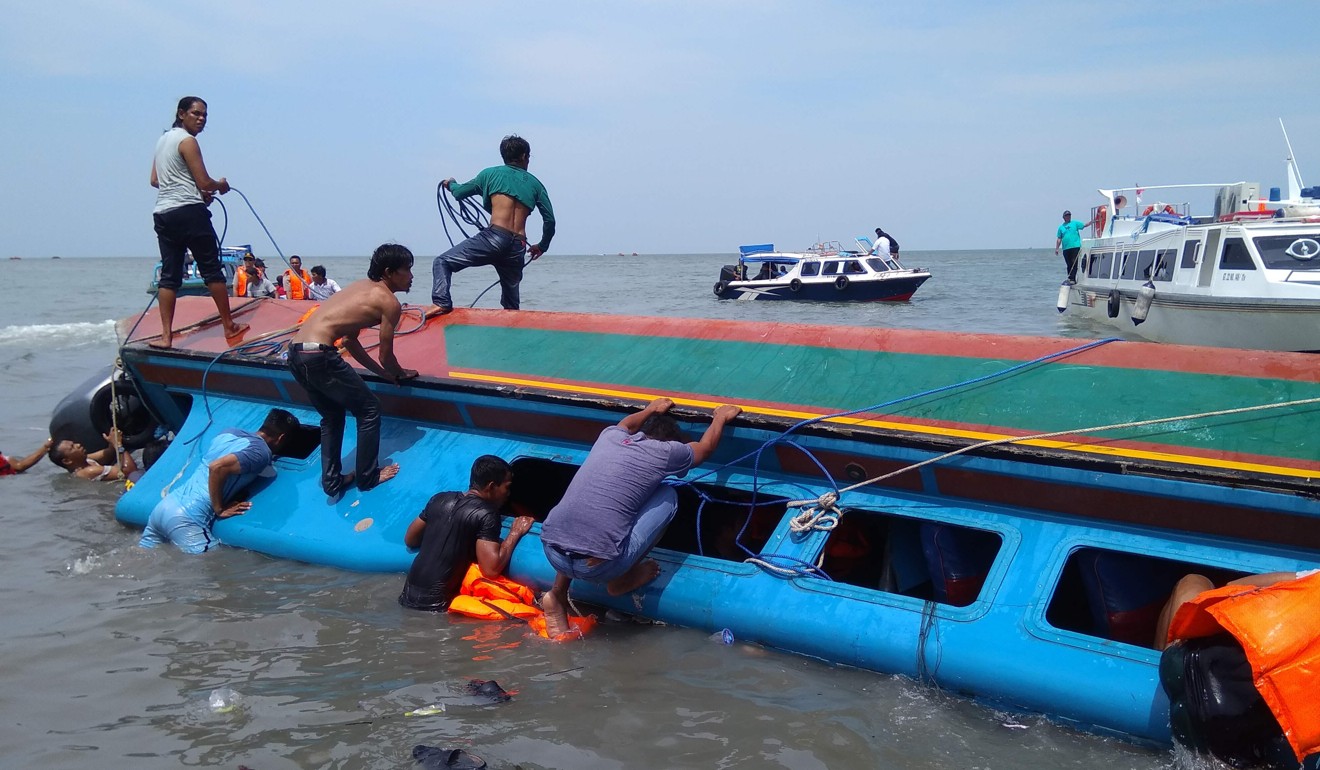
In nature’s cross hairs: How Indonesia's disaster response teams struggle to go it alone
- Search and rescue teams are a source of national pride, and part of the country’s ambitions to respond to its many crises without foreign support
And when his boat slipped through a muddy brown oil slick strewn with floating aircraft debris in late October, he knew he would again be looking for bodies rather than survivors.
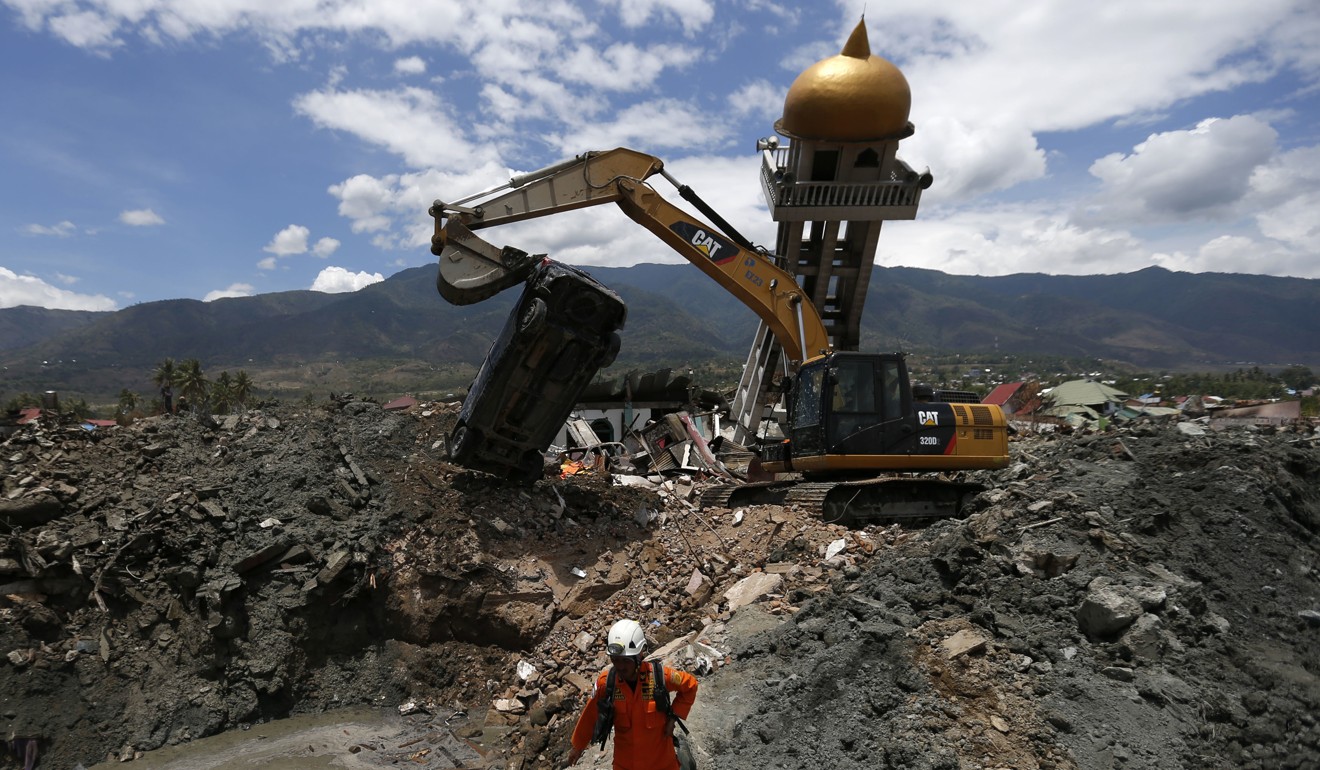
At times, Indonesia’s rescue agency has struggled to keep pace with natural catastrophes across a nation in nature’s crosshairs. Its more than 15,000 islands shadow part of the Pacific’s “Ring of Fire” – an area of intense tectonic activity prone to earthquakes and volcanoes.
Yet the stress, difficult logistics and relentless demands also have made Indonesia’s rescuers into something of folk heroes in their trademark orange jumpsuits.
In times of disaster, foreign aid should be welcomed
The agency has won the admiration of Indonesians as a symbol of national pride and self-reliance. It has even elevated the spokesman for the National Disaster Management Authority, another response agency, into a celebrity as he continues to provide updates to the media despite ongoing treatment for Stage 4 lung cancer.
A cartoon once depicted the spokesman, Sutopo Purwo Nugroho, receiving chemotherapy while a volcano erupted and the ground cracked near his feet.
Retno is 46 years old and has been dispatched to disasters for more than half his life with the National Search and Rescue Agency, known locally by the acronym Basarnas.

The group formed in 1972. Its first major response operation came two years later when a Pan Am flight en route to Los Angeles crashed in mountains near Bali, killing all 107 people aboard. Retno signed up to join Basarnas in 1992 and began work the next year.
The dead cannot be alive, but the alive can be dead
One of his first memorable assignments, he said, came in 2000 when he was dispatched to the island of Sumatra to search for earthquake survivors, flying in with high-ranking ministers on a military transport plane.
The years have taught him how to read the severity of plane crashes, the force of earthquakes and ultimately the chances of survival for those caught in them.
“The dead cannot be alive, but the alive can be dead,” he said of the emphasis that rescuers put on finding survivors quickly. “There’s pride to be found in finding people who are still alive.”
Investigators are narrowing in on the Boeing 737 Max 8’s faulty sensors, which doomed the plane minutes after take off. Pilots wrestled to keep the plane up as incorrect readings on a key vane pushed the plane’s nose down over and over again, causing the aircraft’s altitude to vary dramatically during its 13 minutes in the air.
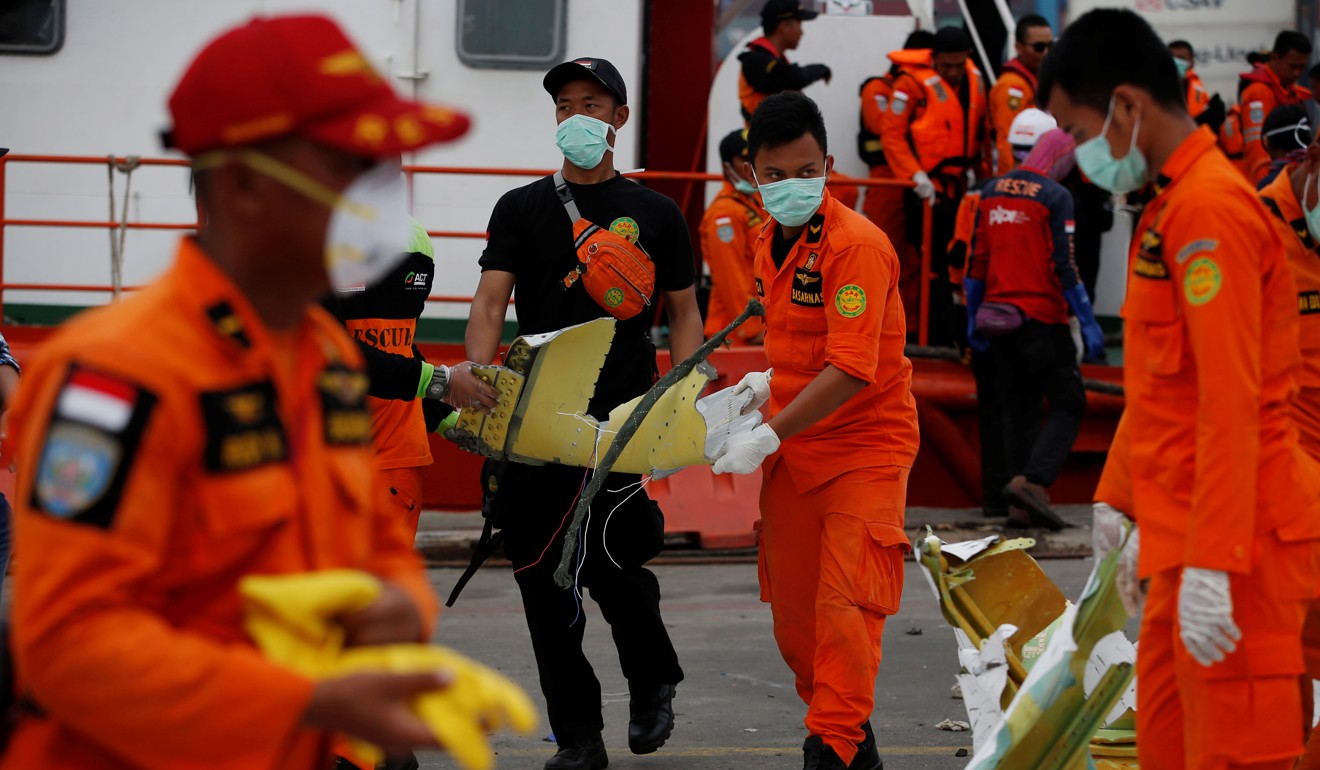
At the crash site, Retno pulled only body parts for the water – a leg, then an arm.
“It was tragic,” he said.
Basarnas’ slogan is “May the universe be saved,” but the past months have not been kind to Indonesia.
In June, a ferry crowded with holiday makers got caught in bad weather on Lake Toba in North Sumatra province, killing nearly 200 people. The next month, the first of several earthquakes struck the island of Lombok, leaving more than 500 people dead.
Death toll from Indonesia quake and tsunami jumps to 832
The Indonesian government made significant investment in its disaster response and relief programmes following the devastating 2004 Indian Ocean tsunami, no longer wanting to be reliant on foreign assistance.
But Indonesian President Joko Widodo was criticised for not declaring the Lombok earthquakes a natural disaster, which would have allowed for more foreign help. Coordination between government agencies was at times lacking. Rescuers were stretched thin as aftershocks continued for weeks, complicating their efforts.

Then on September 28, a quake hit near the city of Palu on the island of Sulawesi. Solid ground turned to mud, sweeping away entire inland villages. It also triggered a tsunami that ploughed through the city, reducing its bay front promenade and homes to tangled piles of rubble. At least 2,250 people were killed in the twin disasters.
Almost exactly a month later, just as some of the very first rebuilding efforts began in Palu, the Lion Air flight crashed.
Jonatan Lassa, who research disaster governance and emergency management at Charles Darwin University in Australia, said: “There is a kind of fatigue.”
Dating back to 2015, rescue resources have been used “very heavily,” Lassa said, adding that they “have not quite recovered.”
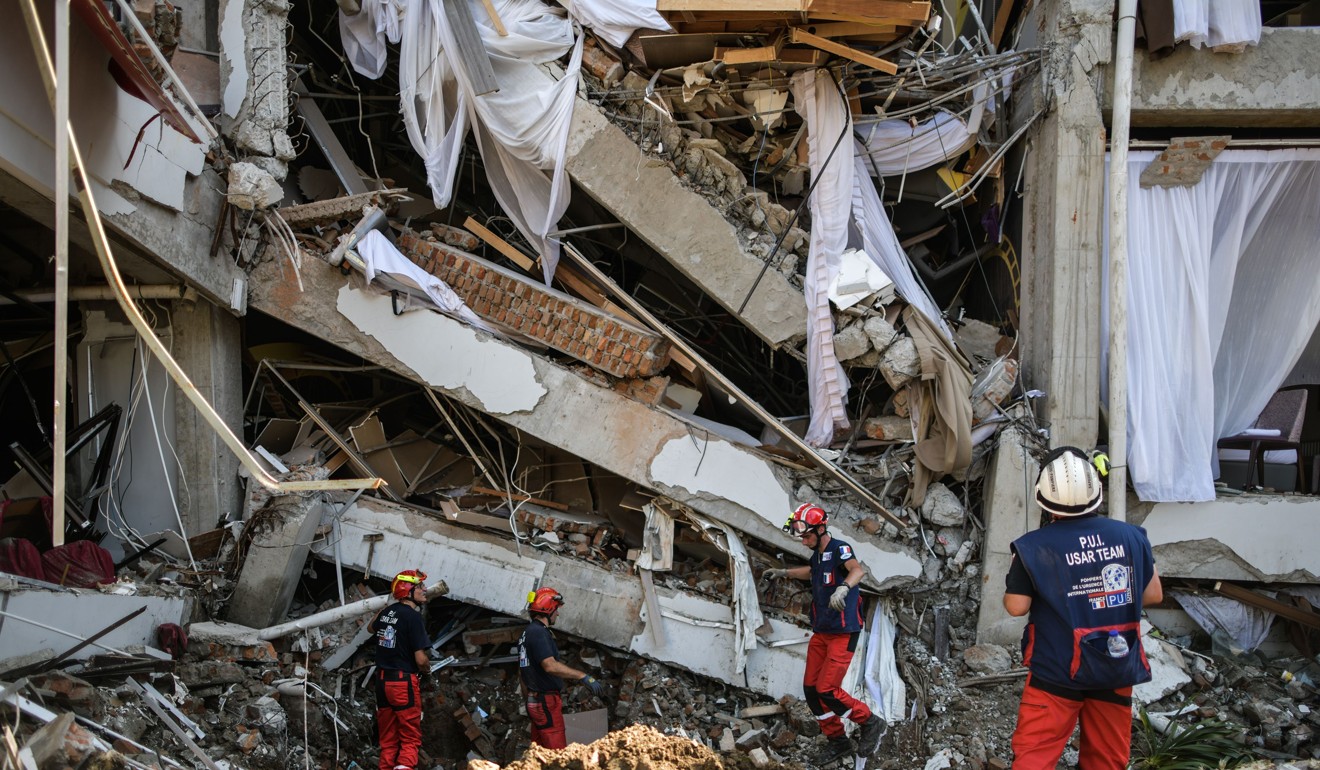
Retno, known to his friends and colleagues as Budi, helped organise logistics for the response to Lombok. He then spent nine days in Palu, where he rescued at least two people alive from collapsed hotels. One woman needed to have her foot amputated so rescuers could pull her from the rubble.
He was in his office in Jakarta early on October 29, when a call came in alerting rescuers to an aircraft that had lost contact with controllers soon after it took off. After helping organise equipment needed for the response, he made his way to the crash area.
A silent plunge, then a deafening crash: how Indonesia’s Lion Air tragedy unfolded
Retno’s two and a half decades with Basarnas included a deployment to Banda Aceh soon after the massive tsunami struck in late 2004. For two weeks, he said, he pulled nothing but bodies from the debris.
He ditched the two jumpsuits he wore constantly during the work.
“When I went back home, I left them behind,” he said. “They were soaked in mud, blood … the smell of corpses.”
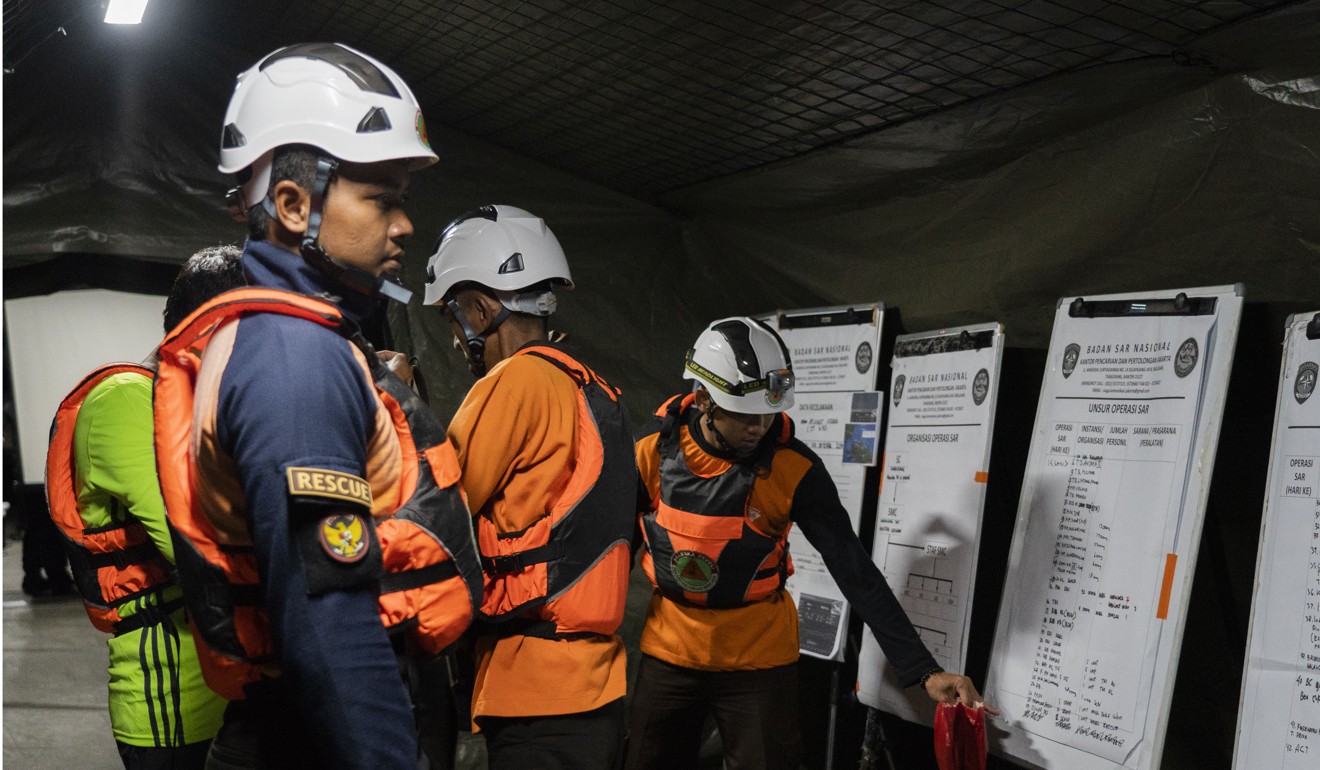
He recounted his time on the job on a recent hazy day at Jakarta’s main shipping port where a command centre for the Lion Air search operations was slowly being dismantled.
Safety measures and equipment have improved since he started. Rescuers are now given shots for possible ailments such as tetanus, he said.
That’s my motivation: to find victims, dead or alive
There is no way, however, to stop memory. His mind occasionally wanders to people in disaster zones and the question of why some survive while others do not.
“When I’m daydreaming, though, sometimes I wonder, how did that happen to them?” he said.
The Lion Air crash brought Retno close to the area that inspired him to join Basarnas.
When he was 15, his older brother was travelling with friends on a small boat off Jakarta when the engine failed and the vessel began to take on water. His brother, Bambang Suprayogi, two weeks shy of his wedding day, worked feverishly to bail out the boat. He gave his life jacket to the captain’s son when it became apparent the boat was going down, a survivor told Retno.
Exhausted, Bambang drowned, the rest of the passengers were rescued, Retno said. His body was never recovered.
“That’s my motivation: to find victims, dead or alive,” he said.
